1503 Shipwreck Unearths Exciting Revelations In History
Five hundred years ago, the world was very different. For Europe, it was “The Golden Age Of Discovery,” and – for other cultures – it was their first encounter with pirates and traders from a faraway land.
It’s a remarkable story of encounter and discovery, a clash of many cultures and their interests. Read on to unfold the fascinating story of a single item that changed the course of history.
The Golden Age Of Discovery
Imagine it’s the year 1500; wherever you are in the world, innovation is breeding, new ways of life are unfolding, and even more exciting, the fact that new faces are finding each other. During the “Golden Age Of Discovery,” European traders traced effective maritime routes to Africa, Asia, and America.
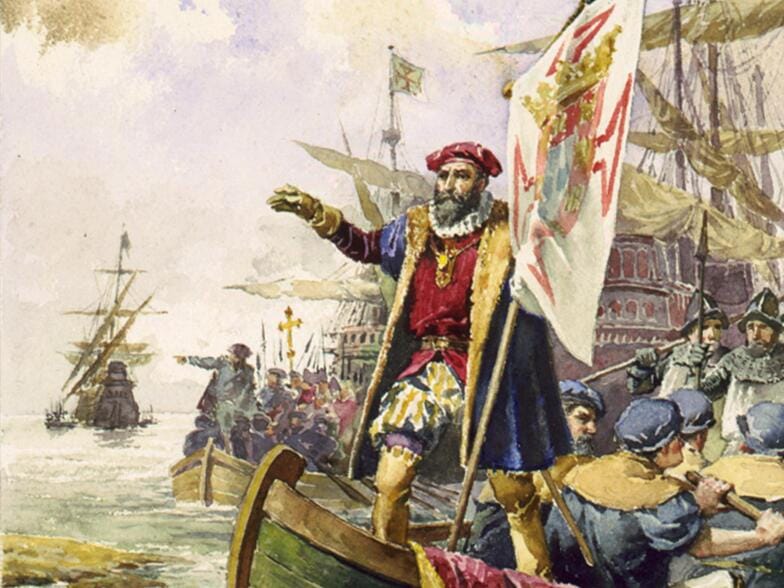
Source: TariparDoly/Twitter
They were seeking new products, textiles, spices, and other resources that couldn’t be found in continental Europe. One of these explorers was an ambitious Portuguese man named Vasco Da Gama.
The Explorer’s Story
Vasco Da Gama might sound familiar from history class. He was a Portuguese explorer that found the most direct route from Europe to India—an event that is said to have started Europe’s global imperialism.
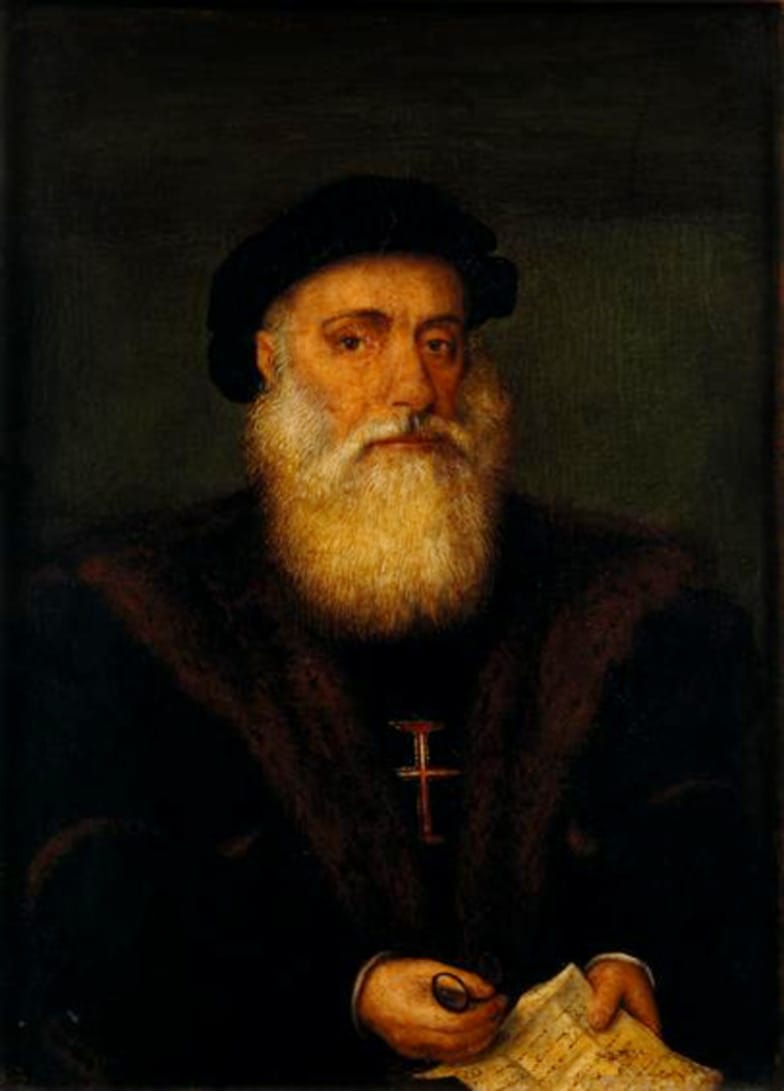
Source: Wikimedia Commons
This massive discovery was made with the crown’s support and many wealthy investors. They wanted to find a way to avoid passing through Constantinople (in current-day Istanbul). The reason was that the Ottomans were causing the trade that went through the land routes as very expensive.
An Unfortunate Event
Da Gama’s explorations were very successful—and lucrative. He was an avid sailor and had a great sense of navigation. He made many trips to India, but on his second trip; he wasn’t as successful on his way back to Europe.
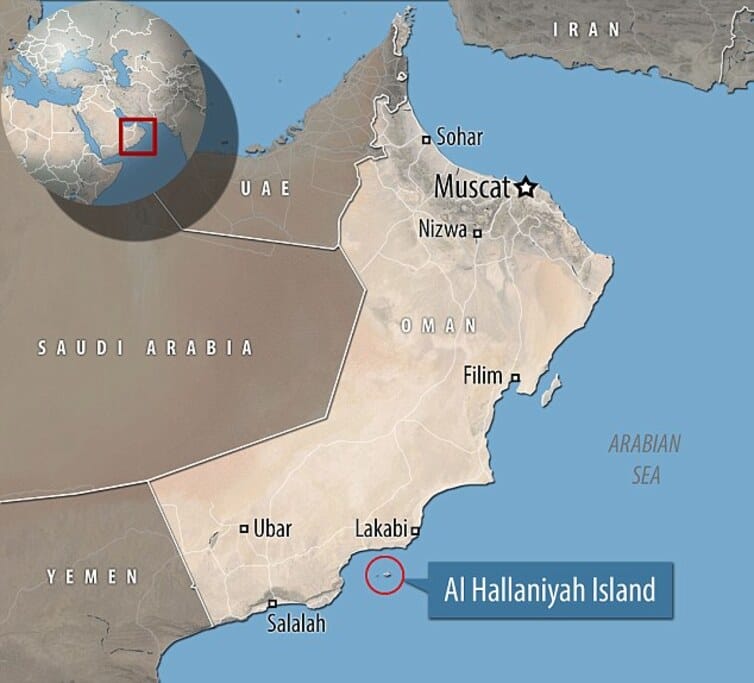
Source: Imgur
Around the coasts of modern-day Oman, on Al Hallaniyah Island, Da Gama’s fleet struck another fleet of Arab ships that were on their way. They destroyed 29 Calicut ships but also lost two of their own, the Esmeralda and the Sao Pedro.
A Grand Discovery
It was in 2013 that the shipwreck was originally discovered. The research was undertaken by Blue Water Recoveries, a company whose expertise is analyzing and recovering shipwrecks from their sites.
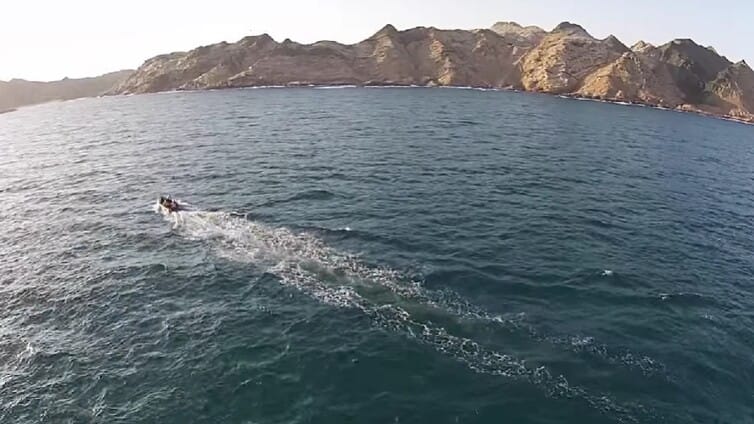
Source: Esmeralda Shipwreck/Youtube
It took some time for Blue Water and the Oman Ministry of Heritage and Culture to conclude that the debris was actually from Esmeralda. Still, when they did, they could put together many puzzle pieces that had been missing for nearly five centuries. Thanks to these experts, history is now unveiling itself from the ocean’s depths.
The Missing Link
The researchers found important information that they corroborated with historians specializing in the era. First, Da Gama’s fleet was separated in two – one commandeered by him and the other by his uncle, Vicente Sondré.

Source: Wikimedia Commons
The excursion was a mess from the beginning, full of intense and violent negotiations with the Rajah. The explorer also made sure to assert his dominance by bombing Calicut. As a result, the Portuguese fleet’s reputation was very negative. The Esmeralda was in Sondré’s fleet, and as they took shelter in Senegal, both groups were separated.
Left Behind
Da Gama was very upset with the Arabs and attacked an important vessel; his crew seized all their belongings and burned the ship. Around 400 people are thought to have died on the ship – most of them were traveling for religious purposes as Islamist pilgrims.
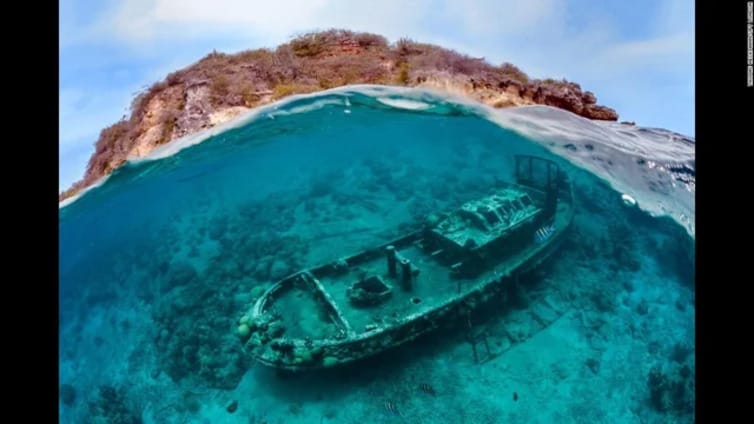
Source: SaltMill/Reddit
This attack was considered a declaration of war, and in 1503, a war began between the Zamorin of Calicut and the Rajah of Cochin. Vasco Da Gama would eventually benefit greatly from this conflict, leading to important commercial contracts.
The Esmeralda’s Demise
In 1503, Da Gama left Sodré and his fleet of five ships behind to protect the Portuguese factories along the Southwest coast of India. However, instead of following his orders, Vincente and his fleet sailed into the Gulf of Aden, between the Arabian Peninsula and Africa, where they engaged in piracy and seized goods from Arab ships.
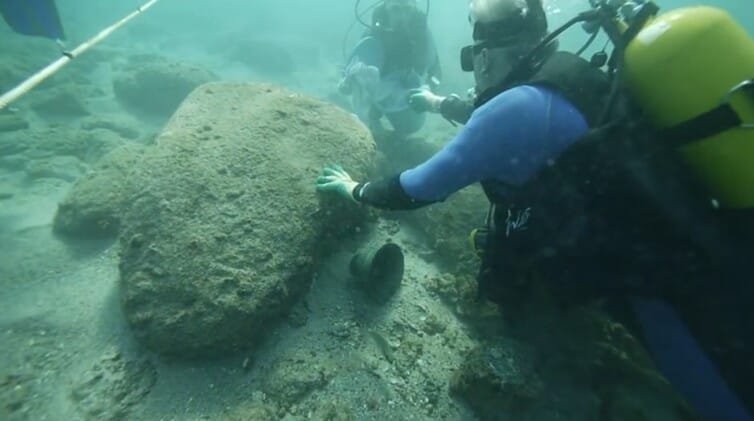
Source: Esmeralda Shipwreck/Youtube
The fleet anchored at Al Hallaniyah in the Khuriya Muriya Islands in May 1503. Locals warned them of an upcoming storm, but Vincente ignored the warning, and the storm struck hard.
Victims Of Bad Weather
According to accounts from the locals of the time, it was a devastating storm. Many people witnessed the Esmeralda and the Sao Pedro perish as they were forcibly pulled away from their anchors and crashed against the rocks.
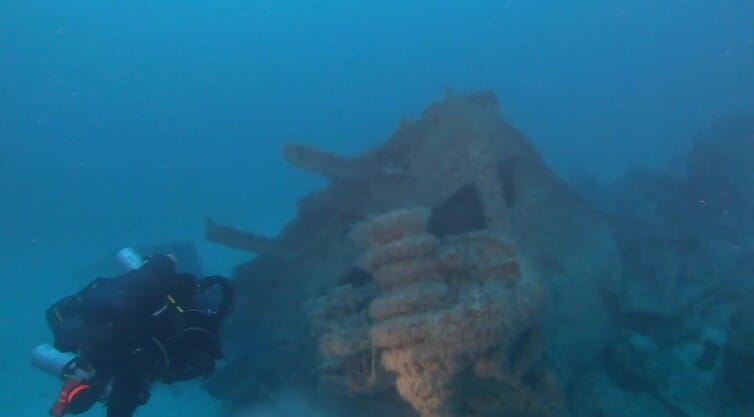
Source: Tak Tang/Youtube
The Sao Pedro was luckily pushed onto the shore, and most of the crew survived. It was a miracle that they could make it under such a threatening condition. Unfortunately, the Esmeralda fared worse and sank (along with the crew) in the deeper waters.
An Impressive Discovery
The wreck – found off the coast of Oman in 2013 – was confirmed to be the Esmeralda in 2016 after conducting extensive research and analysis of the over 2,800 artifacts recovered from the site. It was a major breakthrough for historians.
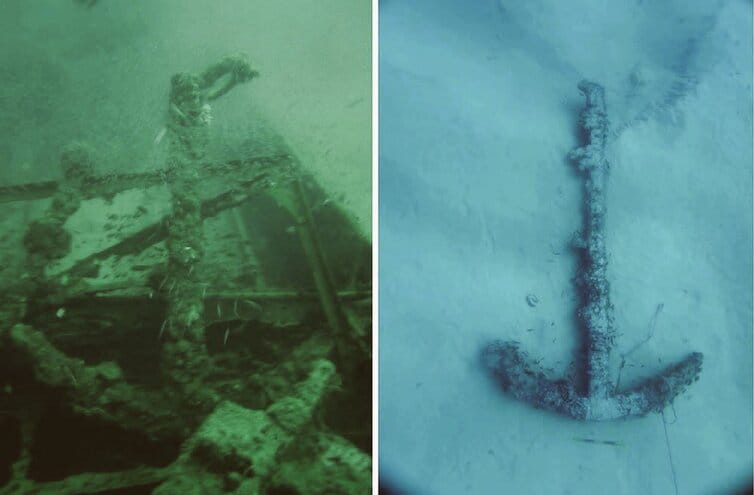
Source: alamri_d/Twitter
A team of Omani and British divers, part of the Blue Water Recoveries group and the government of Oman, originally discovered it. Most of these objects have been damaged, but others were remarkably well-kept, considering they’ve been lying on the seabed for over five centuries.
A Trove Of Incredible Artifacts
The wreck of the Esmeralda, one of Vasco Da Gama’s infamous ships, yielded a rich collection of artifacts, including navigational instruments, ceramics, and weaponry, many of which were remarkably well-preserved despite having been underwater for such a long time.
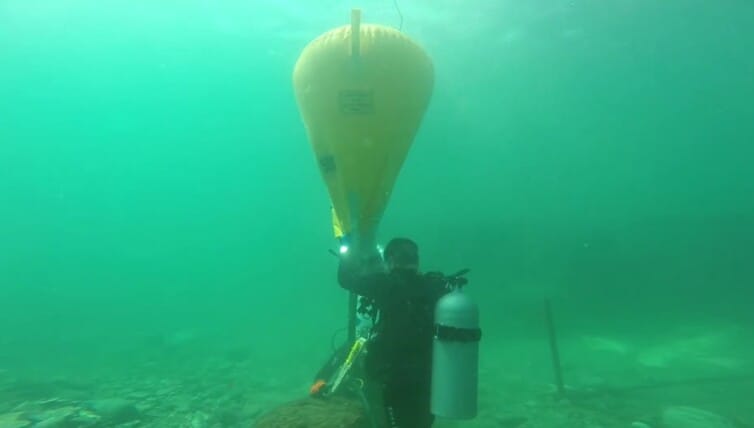
Source: Esmeralda Shipwreck/Youtube
Specialized divers did an excruciating search for objects of historical value; it was no easy task, but the team managed to gather a lot. These artifacts provide valuable insights into the history of maritime trade and navigation during the early Age of Discovery.
The Oldest Of Its Kind
The Esmeralda is the oldest shipwreck from Europe’s “Golden Age Of Discovery,” and it’s a wonder to behold. However, the site isn’t open to the public because of its archaeological importance. Many of the artifacts recovered are displayed in museums such as the National Museum of Oman and the Maritime Museum of Lisbon in Portugal.

Source: Esmeralda Shipwreck/Youtube
These objects are an essential resource to teach about the tumultuous yet fascinating times in the early 16th century when real-life pirates and their great ships roamed the earth.
An Amazing Find
Archaeologists were able to find incredible information by analyzing the objects, and after doing an extensive inspection, the results were stunning. For example, the bell of the ship was found in pristine condition under some rubble and porcelain.

Source: Esmeralda Shipwreck/Youtube
After cleaning it carefully, they put the bell through an MRI (magnetic resonance imaging) scan. This is standard procedure, especially for old objects that can’t be touched too much. Scientists could determine the inscription and read that it was made in 1498. This makes it over 525 years old!
Testimony Of The Discovery
David Mearns, a renowned maritime archaeologist, led the Blue Water Recoveries and Oman’s Ministry of Heritage team. The team consisted of archaeologists, marine archaeologists, and technical divers with expertise in underwater exploration and excavation.
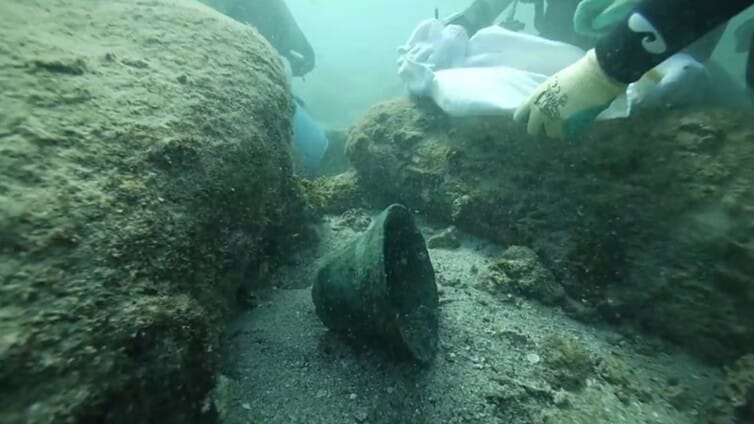
Source: Esmeralda Shipwreck/Youtube
He told the media about his discovery through The International Journal of Nautical Archaeology and described it as “a thing you read about in a Hollywood story.” So, we can only imagine his excitement when he confirmed it was the actual shipwreck he had read about in history books.
They Found Lots Of Rare Objects
Among the many rare objects that they found, these Portuguese cruzado coins were very important. These were mainly used as a currency among those who traded with the Portuguese throughout the 15th and 16th centuries.
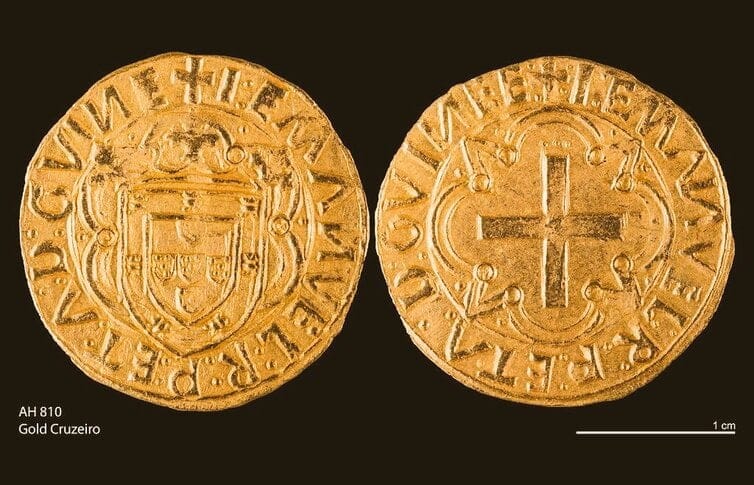
Source: alamri_d/Twitter
The coins were made from pure gold or silver, and the denominations varied depending on their weight. They were the main currency and an essential element for the Portuguese economy during the many travels and commercial deals with other countries. As an empire, they had to assert their dominance through currency.
Artifacts With Unknown Purposes
The team discovered hundreds of artifacts that helped as clues to pinpoint it was the long-lost Portuguese ship. This copper alloy disk is marked with the Portuguese royal coat of arms and features an armillary sphere, a personal emblem of Don Manuel I.
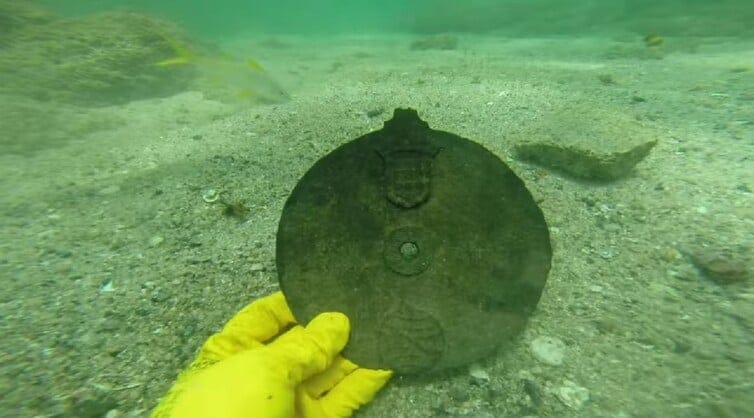
Source: Esmeralda Shipwreck/Youtube
Although the shipwreck has been investigated thoroughly, the exact purpose of the disc remains unclear. It is thought that it may have been used for navigational purposes, but this has not been confirmed. Regardless of its function, the disc is a valuable artifact for historians.
Heaps Of Artillery
The archaeologists did a fantastic job recovering the artifacts. One of the most stunning discoveries was the artillery the ship was carrying. Especially rudimentary stone cannonballs that would’ve been very helpful while attacking any enemy ship they encountered.
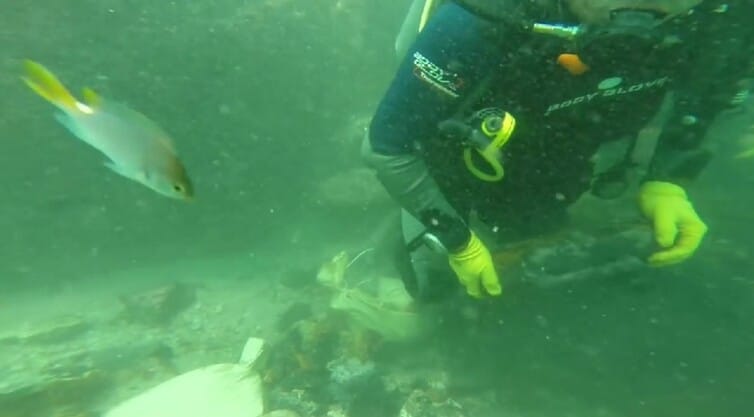
Source: Esmeralda Shipwreck/Youtube
Vasco Da Gama’s fleet was known for being ruthless, and they made a lot of enemies throughout their travels. However, the man was determined to escalate in status. He eventually did so when he was named Viceroy of Portuguese India, although his position lasted only a short time and was riddled with conflict.
Rewriting History
Archaeological sites like the Esmeralda shipwreck provide valuable insights into the history and culture of the past, allowing us to understand the Portuguese’s navigation, trade, and exploration methods.
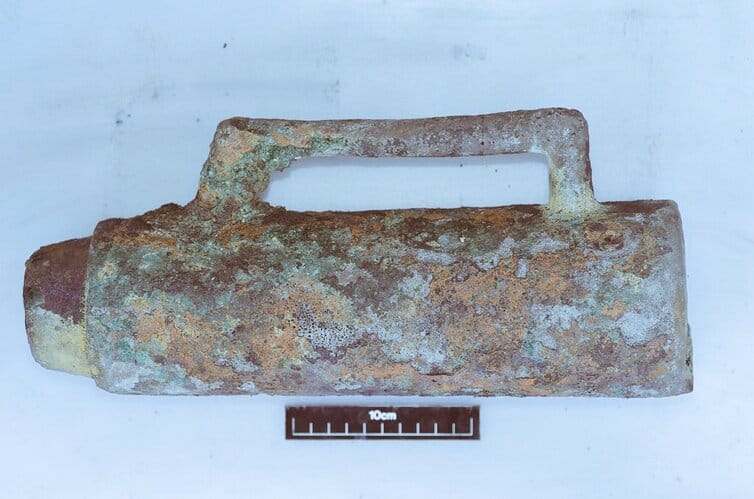
Source: alamri_d/Twitter
This archaeological site, in particular, has helped fill gaps in our historical knowledge by providing new information not previously available through written records or other sources. For example, the hundreds of artifacts found have provided new insights into the fate of the Esmeralda and its purpose on the sea. It also raises a lot of crucial questions.
A Remarkable Discovery
One of the most stunning discoveries in the shipwreck was the Indio, an extremely rare coin made out of silver. Thanks to this coin, it was possible to date the ship’s first voyages and the wreckage.
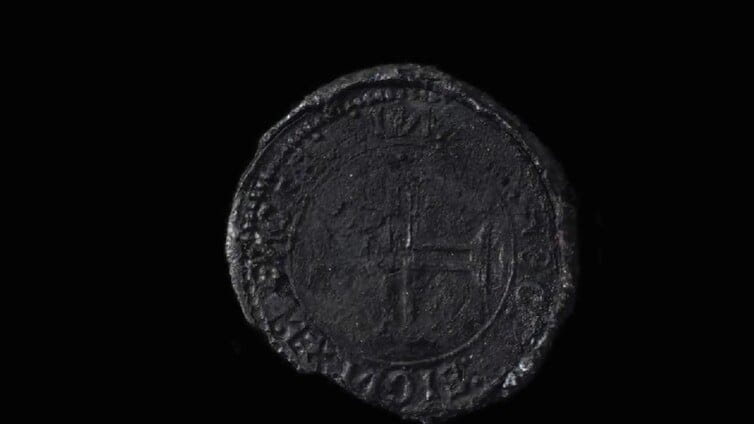
Source: Esmeralda Shipwreck/Youtube
This type of coin was minted in 1499 and commissioned by King Dom Manuel for trade with India. This coin, in particular, accompanied the fleet to Da Gama’s second voyage until its demise. Mearns, the archaeologist in charge of the site, said that finding this coin was a “remarkable discovery.”
A Piece Of History
Vasco Da Gama was the first person to sail directly from Europe to India and trace a map of his voyages. His trips from 1497 to 1499 linked Europe to Asia by sea for the first time, creating trade routes that would change the course of history.
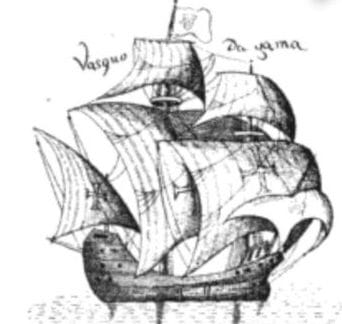
Source: boc111/Twitter
Europeans were able to try new spices, like pepper, cinnamon, and cardamom. They wore new silks and admired unique precious stones and porcelain. In contrast, India had to adapt to the newcomers and their new trade agreements.
The Importance Of Archaeological Sites
The recovery and conservation of artifacts from sites like the Esmeralda shipwreck are essential for us as humans. They can promote a greater appreciation for our shared cultural heritage and inspire a sense of protection and preservation of these places.

Source: cardinarium/Reddit
Archaeological sites and museums can help preserve our past by providing a physical record of olden times and raising awareness about how we used to do things. Reflecting on the past can help us make better decisions for our future.
